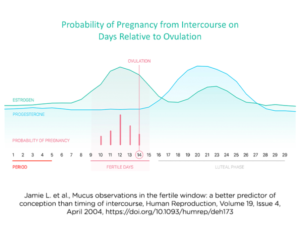Description
kegg uses advanced impedance technology to help pinpoint a woman’s most fertile days.
Changes in the cervical fluid are the most accurate way to assess realtime fertility.
kegg simplifies fertility tracking with just one test a day.
After each test, the data is sent to the cloud, where it is processed through personalized algorithms, and then displayed in the free kegg app. No subscription required!
Additionally, kegg doubles as an optional kegel ball. Through the app, users can choose to be guided through daily kegel exercises to help strengthen the pelvic floor muscles.
Measure What matters

“Cervical fluid is the key sign for timing intercourse to get pregnant,” states Tony Weschler, Author of the bestselling book, Taking Charge of Your Fertility.
Cervical fluid is responsible for nourishing and protecting the sperm while also serving as the medium in which the sperm must travel to fertilize the egg. Changes in fluid quality during the fertile window, are shown to predict day‐specific probabilities of conception.
According to studies, women typically have the most fertile cervical fluid 2-3 days before ovulation, which are typically a woman’s best chances for conception.
Currently, the three most commonly used methods of fertility tracking are: basal body temperature (BBT), Ovulation Predictor Kits (OPKs), and manual cervical mucus observations.
Tracking BBT can only confirm ovulation after it has occurred, whereas OPKs detecting the presence of luteinizing hormone in urine offer a short time from the start of the LH surge to ovulation, roughly 12 to 36 hours. Timing intercourse on the day of ovulation gives only a 8-10% chance of conception.
Around 2 million women track their cervical mucus manually, but these methods can be time-consuming to learn, confusing, and stressful for many. Often because observing their fluid lacks the objective data, leaving many women with low confidence in their own observations.
Our Promise
kegg is on a mission to empower women with deep fertility insights so they can conceive naturally, faster.
kegg is small, sleek, and fits in the palm of your hand. Beautifully designed with your complete comfort in mind. kegg is made of medical grade silicone and gold plated stainless steel.
With a simple 2 minute test per day, you can have instant information about your unique fertility pattern.
kegg is bringing to you the first user friendly cervical mucus-sensing medical device that
Using kegg can take the guesswork out of fertility tracking. No more stress and confusion with each visit to the bathroom can pinpoint your fertile window in real-time.
When women know their fertile window, they are four times more likely to conceive. kegg is here to help!
#FertilityUnderstood






